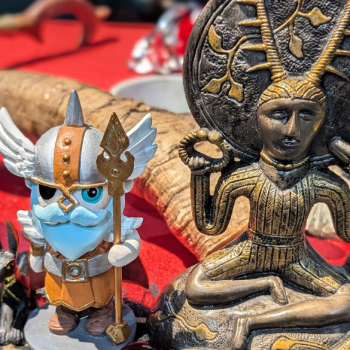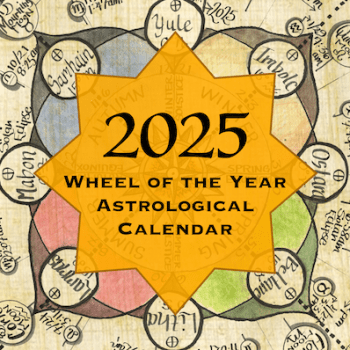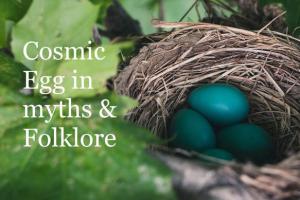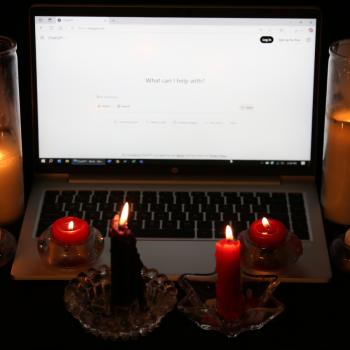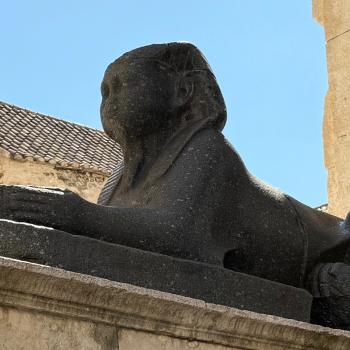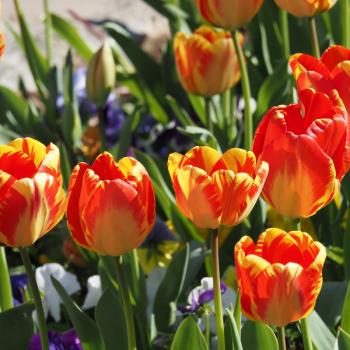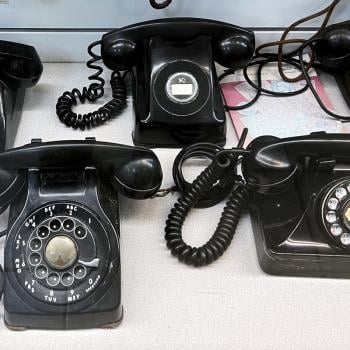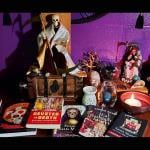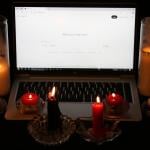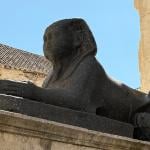Last night I was finishing a speculative post on the nature of the Universe and how that provides a framework for magic. Before I could wrap it up, I felt a tap on my shoulder from a goddess.
Morrigan: “You need to write about me next.”
John: “I will, just as soon as I finish this post.”
Morrigan: “And what about the post after that?”
John: “Well, this is going to be a series. I can’t present my ideas about how and why magic works in one shot.”
Morrigan: “You know, I’m rather busy. I have some stuff I need you to write and I can’t wait a week or two for you to clear your calendar.”
John: briefly contemplates the consequences of annoying a battle goddess. “This can wait, I’ll write about you next.”
OK, so maybe this exchange didn’t happen exactly like that, but the message was just as clear. I’ve been talking with Morrigan and listening to her on and off for the past two years. I am not formally dedicated to her (I am dedicated to Cernunnos and Danu), but I’ve had the need to call on her a time or two. She has always answered, and she’s always asked for something in return. I try not to disappoint her.
In the time I’ve been working with her one thing has become very clear: Morrigan is collecting priestesses. A few priests too, but mainly priestesses.
I first saw this from author and teacher Thorn Coyle. Then I saw it from Morpheus Ravenna, who was featured in the documentary American Mystic. Since then I’ve seen person after person talking about how Morrigan has called them, including one young priestess I had the privilege of helping initiate.
The ancient Celts kept an oral tradition and their stories were not written down until the Christian era. What we know about Morrigan directly from our ancestors is brief and uncertain. I’m currently reading The Guises of the Morrigan by David Rankine and Sorita D’Este, an exhaustive analysis of stories about Morrigan. While she was sometimes seen as a triple goddess (her aspects are Nemain, Badb and Macha), Rankine and D’Este also see aspects of her in many other goddesses and spirits. I’m not sure I agree with that, but I’ll reserve judgment until I finish the book. More importantly, I absolutely agree with their suggestion that Morrigan was a very important goddess to our Celtic ancestors and I find it totally appropriate she is calling the descendants (of both blood and spirit) of those Celts today.
In our time Morrigan generally has three roles. She is the Goddess of Sovereignty, a representation of the land and its fertility. She gives the right to rule, and she withdraws that right if the ruler is unjust or ineffective. She is a battle goddess supporting those who fight for her causes, especially the protection and empowerment of women. And she is a psychopomp, guiding the souls of the dead to the Otherworld, especially those who die in combat.
If I thought deities were only metaphors, I’d say young women are seeing a difficult, dangerous world and are identifying with a mythical figure who is a strong and cunning fighter and are becoming stronger through that identification. But I’m a hard polytheist – I see goddesses and gods as real, distinct beings. Morrigan is far more than a metaphor. She is an actor in our lives and she is calling priestesses and priests for a reason. She hasn’t shared that reason with me, but I can make some reasonable speculations.
I preached against apocalyptic prophecies last week, but you don’t need special revelation to understand we live in challenging times. This country’s economy went into a great recession four years ago and it’s yet to recover. Millions of people can’t find work while a few have rigged the system to make themselves incredibly rich. The Western economy is based on the the myth of progress and the model of perpetual growth, myths and models that are ultimately unsustainable and seem to have reached their limits.
More importantly, we appear to have passed the tipping point on climate change. Our climate is becoming hotter, dryer and prone to greater extremes. We missed the opportunity to prevent it – now we’re going to have to figure out how to deal with it, and how to prevent a human calamity as rainfall patterns and growing seasons change and as sea levels begin their inevitable rise.
It is not surprising to find a battle goddess in the middle of the greatest social, political, and economic conflict of our time. My belief – my hope – is that Morrigan is preparing a group of priestesses and priests to support a movement of new ways of living and being, ways that recognize Western materialistic culture is not satisfying the people living in it and is killing other people and other creatures. These new ways will recognize the Earth as sacred and seek to live in harmony with it, not to dominate it.
We need priestesses and priests who can scream “enough!” and who can protect and promote and nurture new ideas and new ways of living and being until they reach critical mass.
I hope and pray I’m right and Morrigan is calling priestesses and priests to serve a new and growing Community of the Earth.
Because if I’m wrong, then she’s preparing an army of Ravens to clean up the mess we’re going to make in clinging to a myth and a lifestyle that can’t be supported very much longer.




